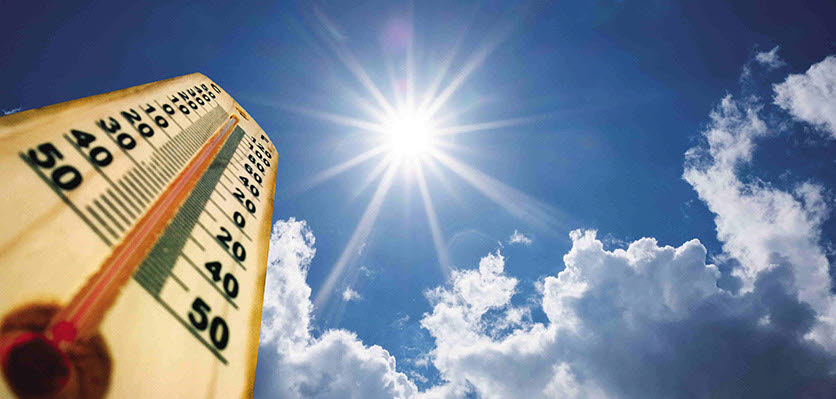
Heat stress has long been known to severely reduce the production and fertility of lactating cows, but it is worth reminding our clients that attention should also be paid to dry unborn cows and even their offspring.
Research in the Journal of Dairy Science in 2016 compared two groups of calves: 1) calves from cows which were actively cooled for the last six weeks of their pregnancy, and 2) calves from cows1 which were not cooled during the last six weeks of pregnancy. The results were staggering.
The first finding was that hot calves (calves from cows which were not cooled) were born lighter than cool calves (calves from cows actively cooled), the difference was ~5.7kg. Interestingly, the cool calves kept this weight difference through the first year of life, but the hot calves caught up by the time they calved.
A greater percentage of cool heifers reached first lactation compared with hot heifers (85.4 vs. 65.9%). This was due to higher rates of disease and death among the hot heifers.
Heat stress in utero is known to reduce the ability of calves to take up IgG in colostrum, resulting in lower immunity and increased susceptibility to disease.
What is most notable is the difference in milk production between the two groups. The difference between the hot and cool heifers amounted to 5.1 kg milk per day averaged over 35 weeks. This totals 1251 kg of milk over the trial period.
The trial concluded that the difference in milk production is possibly due to heat stress permanently affecting the fetal genome. The result is fetal programming which is metabolically inefficient at producing milk compared to calves which are cooled.
The lesson: while many farms currently concentrate on cooling their milking cows, farmers need to be aware that they’re not the only cattle feeling the pinch.
More information
- Dahl GE, Tao S and Monteiro APA. Effects of late-gestation heat stress on immunity and performance of calves. J Dairy Sci 2016;99;3193–3198. Journal of Daily Science.
This article appeared in the January/February 2019 issue of the Australian Veterinary Journal
